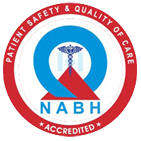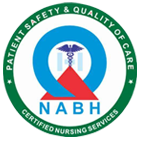FOLLOW THE MISSION HOSPITAL




Arteriovenous malformations (AVMs) are defects of the circulatory system that are generally believed to arise during embryonic or fetal development or soon after birth. Although AVMs can develop in many different sites, those located in the brain or spinal cord can have especially widespread effects on the body. Most people with neurological AVMs experience few, if any, significant symptoms. The malformations tend to be discovered only incidentally, usually either at autopsy or during treatment for an unrelated disorder. But for about 12 percent of the affected population (about 36,000 of the estimated 300,000 Americans with AVMs), these abnormalities cause symptoms that vary greatly in severity.
Medication can often alleviate general symptoms such as headache, back pain, and seizures caused by AVMs and other vascular lesions. However, the definitive treatment for AVMs is either surgery or focusedirradiation therapy. The decision to perform surgery on any individual with an AVM requires a careful consideration of possible benefits versus risks.
The greatest potential danger posed by AVMs is hemorrhage. Researchers believe that each year between 2 and 4 percent of all AVMs hemorrhage. Most episodes of bleeding remain undetected at the time they occur because they are not severe enough to cause significant neurological damage. But massive, even fatal, bleeding episodes do occur. Whenever an AVM is detected, the individual should be carefully and consistently monitored for any signs of instability that may indicate an increased risk of hemorrhage.
Researchers are studying large populations of individuals with AVMs to formulate criteria that will allow doctors to predict more accurately the risk of hemorrhage. Of particular importance is the role that high blood pressure within the lesion plays in the onset of hemorrhage. Other scientists are examining the genetic basis of familial cavernous malformations and other hereditary syndromes that cause neurological vascular lesions, including ataxia telangiectasia.
Other scientists are seeking to refine the techniques now available to treat AVMs. One study is closely examining the precise effects that radiation exposure has on vascular tissue in order to improve the predictability and consistency of treatment results. Several studies are devoted to developing new noninvasive neuroimaging technologies to increase the effectiveness and safety of AVM surgery. Some scientists are pioneering the use of MRI to measure amounts of oxygen present in the brain tissue of patients with vascular lesions in order to predict the brain’s response to surgical therapies. Others are developing a new micro-imager that may be inserted into catheters to increase the accuracy of angiography. In addition, new types of noninvasive imaging devices are being developed that detect functional brain activity through changes in tissue light emission or reflectance.

A Unit Of Durgapur Medical Centre Pvt. Ltd.